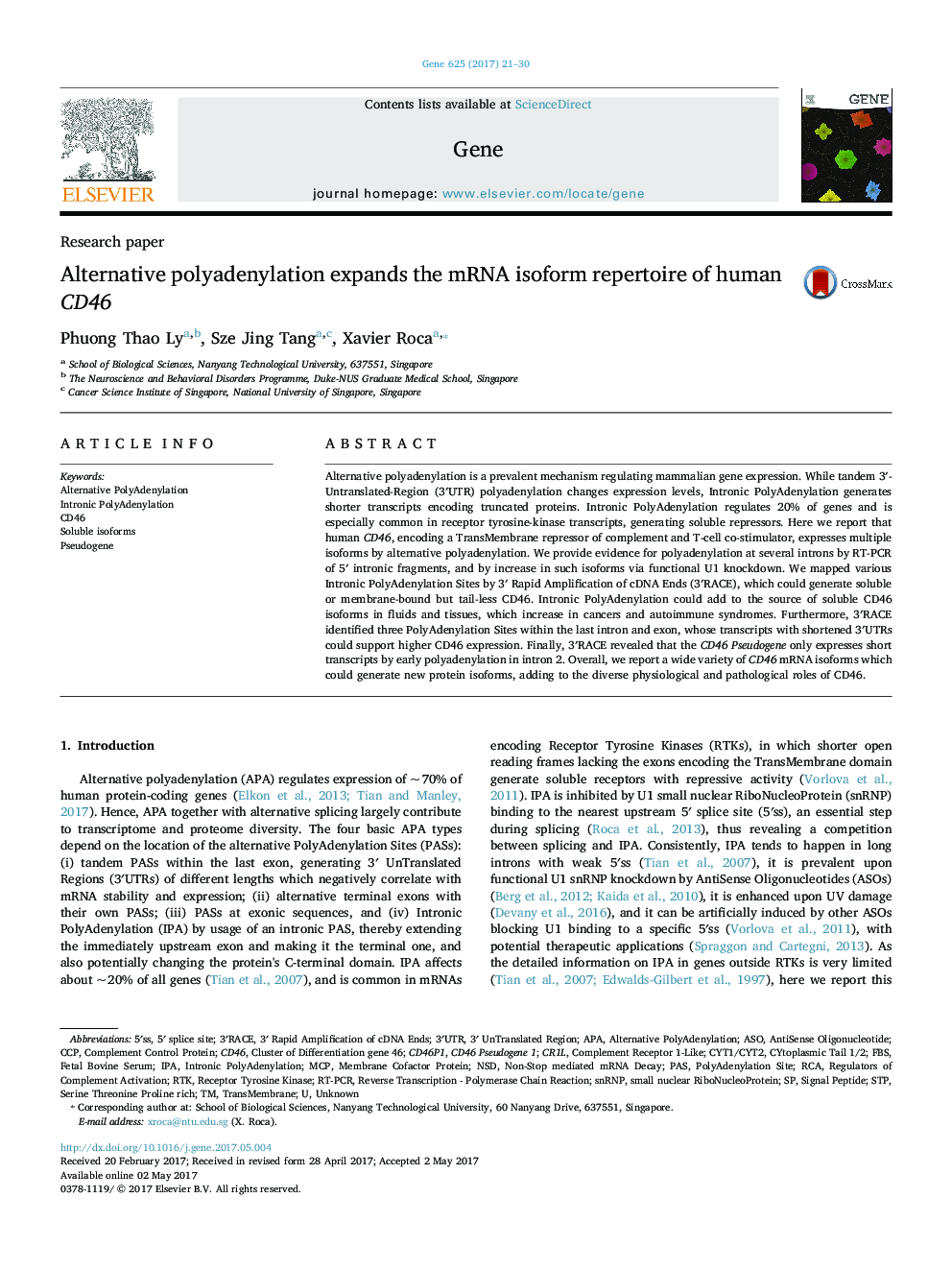| Article ID | Journal | Published Year | Pages | File Type |
|---|---|---|---|---|
| 5589566 | Gene | 2017 | 10 Pages |
Abstract
Alternative polyadenylation is a prevalent mechanism regulating mammalian gene expression. While tandem 3â²-Untranslated-Region (3â²UTR) polyadenylation changes expression levels, Intronic PolyAdenylation generates shorter transcripts encoding truncated proteins. Intronic PolyAdenylation regulates 20% of genes and is especially common in receptor tyrosine-kinase transcripts, generating soluble repressors. Here we report that human CD46, encoding a TransMembrane repressor of complement and T-cell co-stimulator, expresses multiple isoforms by alternative polyadenylation. We provide evidence for polyadenylation at several introns by RT-PCR of 5â² intronic fragments, and by increase in such isoforms via functional U1 knockdown. We mapped various Intronic PolyAdenylation Sites by 3â² Rapid Amplification of cDNA Ends (3â²RACE), which could generate soluble or membrane-bound but tail-less CD46. Intronic PolyAdenylation could add to the source of soluble CD46 isoforms in fluids and tissues, which increase in cancers and autoimmune syndromes. Furthermore, 3â²RACE identified three PolyAdenylation Sites within the last intron and exon, whose transcripts with shortened 3â²UTRs could support higher CD46 expression. Finally, 3â²RACE revealed that the CD46 Pseudogene only expresses short transcripts by early polyadenylation in intron 2. Overall, we report a wide variety of CD46 mRNA isoforms which could generate new protein isoforms, adding to the diverse physiological and pathological roles of CD46.
Keywords
CCP3′RACE5′SSsnRNPpolyadenylation siteCD46reverse transcription - polymerase chain reactionRTKFBSIPANSDMCPRT-PCRRCAASO3′ untranslated region3′UTRantisense oligonucleotideAlternative polyadenylationSTPregulators of complement activationRTK, Receptor tyrosine kinasesmall nuclear ribonucleoproteinfetal bovine serumtransmembraneUnknownPAScomplement control proteinmembrane cofactor proteinPseudogeneSignal peptideAPA
Related Topics
Life Sciences
Biochemistry, Genetics and Molecular Biology
Genetics
Authors
Phuong Thao Ly, Sze Jing Tang, Xavier Roca,
